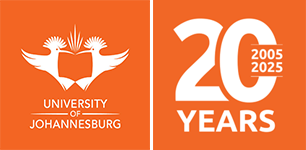UJ has four campuses: the Auckland Park Kingsway, Auckland Park Bunting Road, Doornfontein and Soweto campuses – all located in the metropolitan area of the City of Johannesburg.
The campuses vary in size and each has its own character and culture contributing to the institution’s rich diversity. A comprehensive development plan has been framed to ensure the optimal utilisation of all campuses. This will direct the growth and development of five sites of higher education delivery, each unique in its academic programme profile and capacity, but all sharing the objective to offer high-quality university education.
There is much excitement about the establishment of the Soweto Centre for Small and Medium Business Enterprise Development on the Soweto Campus. The Centre is the first phase of the Campus’s flagship development, the Johannesburg School of Leadership, with its distinctive focus on and exploration of African leadership.
Recent developments such as the state-of-the-art buildings accommodating the School of Tourism and Hospitality, the Faculty of Art, Design and Architecture, and the modern Arts Centre [comprising a theatre and gallery] are to the benefit of not only UJ but also the Johannesburg community at large. The combined facilities available at the University are among the best in the country and include libraries, micro-laboratories, sports and culture facilities. Many of UJ’s facilities such as the restaurants, conference venues and the art theatre and gallery are commercially driven and open to the general public.
The University comprises a built-up area in excess of 45,000m2 and the facilities available at the respective campuses include:
- Lecture rooms and micro-laboratories.
- Libraries.
- Campus and health clinics.
- Student shopping centres, restaurants and cafeterias.
- Auditoriums, halls, galleries and conference venues.
- Sports facilities.
Campus Masterplan
Background to the Campus Master Plan
The University of Johannesburg was formed as a result of the merger between the former Technikon Witwatersrand, Vista University and Rand Afrikaans University on 1st January 2005. The University consists of a number of faculties and has four campuses in and around Johannesburg with a diverse and multi-cultural community.
The University requires a Campus Master Plan to be prepared to provide it with strategic direction and to act as a guide for future growth and development for the short-, medium- and long-term. The Campus Master Plan must grow out of the academic vision and mission of the University.
The GAPP Architects and Urban Designers/Julian Elliott Consortium will undertake the development of the Campus Master Plan.
Vice-Chancellor's Comment
The University continues to make progress in moving beyond the merger and defining itself in terms of its new identity in line with its vision, mission and core values. The University has achieved another milestone in the work undertaken in development of the Campus Master Plan, which must facilitate full alignment between physical resource use and planning and the core academic mission of the University. Furthermore, it is a framework to ensure optimal use of resources and effective decision-making around physical resources.
The University comprises 4 campuses and is indeed a diverse community. It also has more than 600 000 square meters of buildings under roof, which includes teaching, research, administration, support, sport, recreational and living space. The Campus Master Plan strives to ensure we make the best of the assets we posses, we balance current effective use with consideration of and planning for future needs, and that informed adjustments and improvements are made to create a physical setting that facilitates rather than hinders the attainment of UJ’s key strategic goals.
Apart from prioritising the needs for teaching, research and other academic support functions, the Campus Master Plan is also informed by the following imperatives:
Enhancement of the quality of student life and realisation of a preferred student experience.
Constant enhancement of the quality of academic life and the enhancement of the academic community at UJ.
Integration and a sense of connectedness between different campuses, spheres of activity and functions within the University.
The establishment of an embracing and inclusive institutional culture.
The Steering Committee is in the process of developing a draft in consultation with the service provider; input and feedback from the broader UJ community is now required in order to refine and finalise the plan.
Lecture Facilities
- Auckland Park Bunting Road Campus – A total of 55 lecture halls providing 4 412 seats.
- Auckland Park Kingsway Campus – A total of 66 lecture halls providing 7 787 seats.
Students have access 24 hours a day to two microlaboratories with a total of 269 workstations. Another five microlaboratories with 774 workstations giving access to the electronic learning environment (Edulink) should be completed early in 2005.
- Doornfontein Campus – A total of 84 lecture rooms providing 5 142 seats.
- Soweto Campus – A total of 17 lecture halls providing 1 842 seats.
Venues
- Auckland Park Bunting Road Campus
- Auckland Park Kingsway Campus
The Sanlam Auditorium is a popular location for concerts, congresses and meetings, and the graduation ceremonies are held here annually.
In 2005, the University was proud to open its new Arts Centre. The Arts Centre includes an impressive Art Gallery, which hosts exhibitions of acclaimed South African contemporary artists. The Arts Centre also boasts a theatre seating 435 as well as rehearsal rooms overlooking the city. The theatre is used for both University and outside productions.
Doornfontein Campus
The conference venue, accommodating 185 people, is used for prize-giving ceremonies, conferences, seminars, cocktail functions, farewells and workshops.
Soweto Campus
The indoor Sports Arena is a multipurpose venue that is also used for graduation ceremonies, conferences and community events. The Conference Hall accommodates 110 people.
